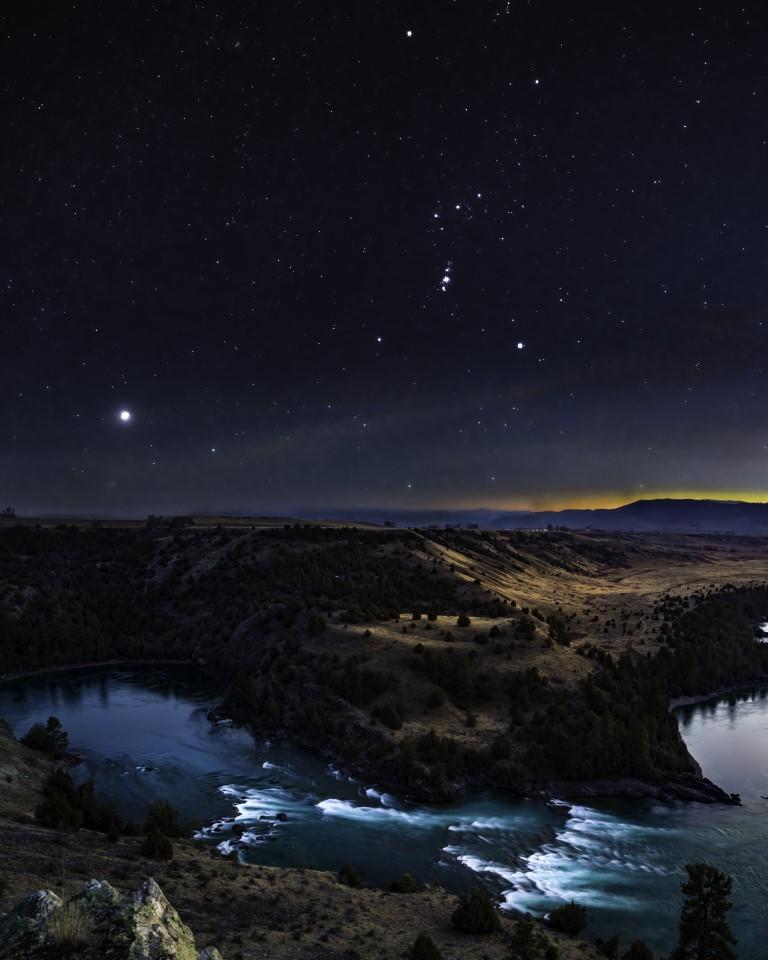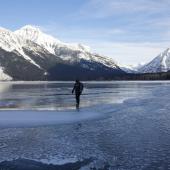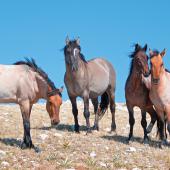The Big Sky at Night: A Journey Into Darkness

Photo by Doug Stevens
Montana is known as the “Big Sky” state, and for good reason. Our skies just seem bigger here. Under our big sky are manifold natural wonders: from Glacier National Park to Yellowstone; from the border with Idaho in the west to the rolling plains in the east. Tourists and locals alike enjoy these special places. As I said, those are under our big sky. What about up, in this big sky itself, especially when the sun goes down?
Montana is blessed with some of the darkest skies in the country, due to lack of any large light-polluting cities. Couple this with the many wildernesses and other wild and scenic set-aside areas, and one can get far away from even the light of small towns. My imagination has been captivated by the night sky since childhood and Montana offers so many opportunities to get out and “wish upon a star”. It is this fascination, combined with my love of photography, that has caused me to turn my camera from the magnificent landscapes of this state during the day, upwards to the “Big Sky at Night.”
You do not need high-end, fancy equipment to begin your “journey into the darkness.” However, a couple of items are “musts.” Any digital camera is capable of taking night photos, but you do need a fast, wide lens if you want stars that look like points rather than trails. Also, you will need a reasonably stable tripod, as exposures can range from 10 to 30 seconds, or sometimes even much longer. There are plenty of resources on the internet, too, to help you get the night photos you want with the gear that you may have. Check them out and open up your camera to a whole new world under the “Big Sky at Night!”

Milky Way over an abandoned homestead, Mission Valley.
Milky Way
When we look up in the night sky and see the Milky Way, we are looking at the disk of our galaxy edge on. We can either be looking out along the spiral arm to the outer edge of our galaxy, or we could be looking in, toward the center. Some part of the Milky Way is visible all year round, but when our night sky is looking into the center, our Galactic Core, where the densest concentration of stars are, it becomes a much more spectacular night scene to photograph. Unfortunately, the Core is not visible all year. In Montana, the best months are March through October. That limits photography opportunities to about 6 or 7 times during and around the New Moon, when the light from the Moon won’t wash out the light from the stars.

Big dipper over moonlit mountain lake.
Moonlit Landscapes
Having failed to capture a mountain landscape by the light of a full moon during my film days, I was astonished at my first attempt with a digital camera. To my eyes, I could make out some detail – a lake, some mountain peaks, etc. However, humans can normally only see black and white under night conditions. As my image appeared on the camera rear LCD screen after taking the photo, I was taken aback by how much it looked like a daytime photo – complete with the green of the trees and grass, brightly lit mountains and a somewhat blue sky – but with stars!

Orion chases the sun over the Flathead River
Constellations
Including well known constellations in night photos can be fun and impactful. However, unless one is an avid astronomer, few can recognize many of these. The most prominent, commonly known ones are the Big Dipper (Ursa Major) and Orion, accompanied by the Dog Star, Sirius.
The Big Dipper is visible year-round, as it rotates around the North Star (Polaris), so there are plenty of opportunities throughout the year for night photos that feature it. By comparison, Orion, the Hunter makes its first appearance in the pre-dawn sky of Autumn. It moves forward throughout the Winter, until finally exiting into the day skies by mid-Spring.

Northern Lights over Lake McDonald, Glacier National Park. Photo by Doug Stevens
Celestial Objects – meteor showers, comets, aurora
Meteor showers can be interesting subject for night photography. Their appearance is predictable and it is possible to come away with photos showing several streaks emanating from a common source. This source gives rise to the name for each shower. For example, The Geminids are usually the strongest meteor shower of the year and occur in mid-December. Unfortunately, for those on the western side of the state, this is a very cloudy time of year and I have yet to see or photograph them. Another well known meteor shower are the Perseids, which peak in mid-August. This year the moon will be a waxing crescent and should set in time to enjoy dark skies for the shower (possible forest fire smoke notwithstanding).
Montana is certainly not Alaska when it comes to the Aurora, but we are far enough north to get some displays low on the northern horizon. This comes during times of increased solar flare activity and goes through an 11 year cycle – so some years are definitely better than others.
Then there are the very infrequent visitations of comets. We were very lucky in 2020 to have the comet “Neowise” grace our night skies. It was visible for about two months and made for some exciting views.

















Leave a Comment Here